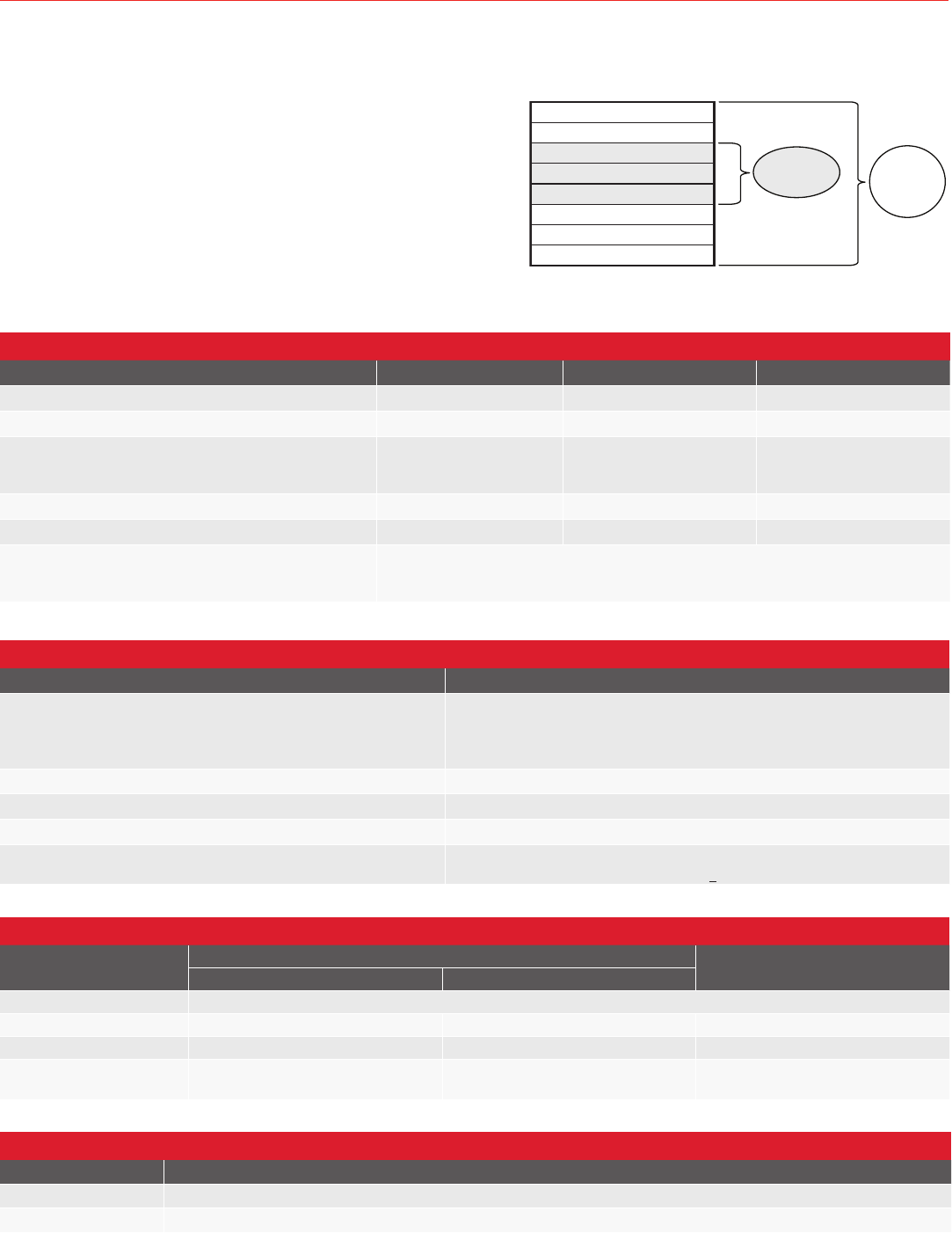Datasheet

2
Sensing and Internet of Things
Basic Board Mount Pressure Sensors, ABP Series
FIGURE 1. TOTAL ERROR BAND
TABLE 1. ABSOLUTE MAXIMUM RATINGS
1
CHARACTERISTIC MIN. MAX. UNIT
Supply voltage (V
supply
) -0.3 6.0 Vdc
Voltage on any pin -0.3 V
supply
+ 0.3 V
Digital interface clock frequency:
I
2
C
SPI
100
50
400
800
kHz
ESD susceptibility (human body model) 2 — kV
Storage temperature -40 [-40] 85 [185] °C [°F]
Soldering time and temperature:
lead solder temperature (DIP)
peak reflow temperature (Leadless SMT, SMT)
4 s max. at 250°C [482°F]
15 s max. at 250°C [482°F]
1
Absolute maximum ratings are the extreme limits the device will withstand without damage.
TABLE 2. ENVIRONMENTAL SPECIFICATIONS
CHARACTERISTIC
PARAMETER
Humidity:
all external surfaces
internal surfaces of Liquid Media Option (T, V, F, G)
internal surfaces of Dry Gases Option (N, D)
0 %RH to 95 %RH, non-condensing
0 %RH to 100 %RH, condensing
0 %RH to 95 %RH, non-condensing
Vibration
15 g, 10 Hz to 2 kHz
Shock
100 g, 6 ms duration
Life
1
1 million pressure cycles minimum
Solder reflow
J-STD-020-D.1 Moisture Sensitivity Level 1
(unlimited shelf life when stored at <30°C/85 %RH)
1
Life may vary depending on specific application in which the sensor is used.
TABLE 4. SENSOR PRESSURE TYPES
PRESSURE TYPE DESCRIPTION
Gage Output is proportional to the difference between applied pressure and atmospheric (ambient) pressure.
Differential Output is proportional to the difference between the pressures applied to each port (Port 1 – Port 2).
TABLE 3. WETTED MATERIALS
1
COMPONENT
PRESSURE PORT 1 (P1)
PRESSURE PORT 2 (P2)
DRY GAS OPTION LIQUID MEDIA OPTION
Ports and covers high temperature polyamide
Substrate alumina ceramic — alumina ceramic
Adhesives epoxy, silicone epoxy, silicone gel epoxy, silicone
Electronic components
silicon, glass, solder, gold,
aluminum
304 SST silicon
1
Contact Honeywell Customer Service for detailed material information.
Total Error Band (TEB) is a single specification that includes
all possible sources of error. TEB should not be confused with
accuracy, which is actually a component of TEB. TEB is the worst
error that the sensor could experience. The TEB specification
on a datasheet may be confusing. Honeywell uses the TEB
specification in its datasheet because it is the most comprehensive
measurement of a sensor’s true accuracy. Honeywell also
provides the accuracy specification in order to provide a common
comparison with competitors’ literature that does not use the
TEB specification. Many competitors do not use TEB—they simply
specify the accuracy of their device. Their accuracy specification,
however, may exclude certain parameters. On their datasheet, the
errors are listed individually. When combined, the total error (or
what would be TEB) can be significant.
Total
Error
Band
Accuracy
BFSL
All Possible Errors
Thermal Hysteresis
Thermal Effect on Offset
Thermal Effect on Span
Pressure Non-Linearity
Pressure Hysteresis
Full Scale Span
Offset
Pressure Non-Repeatibility










